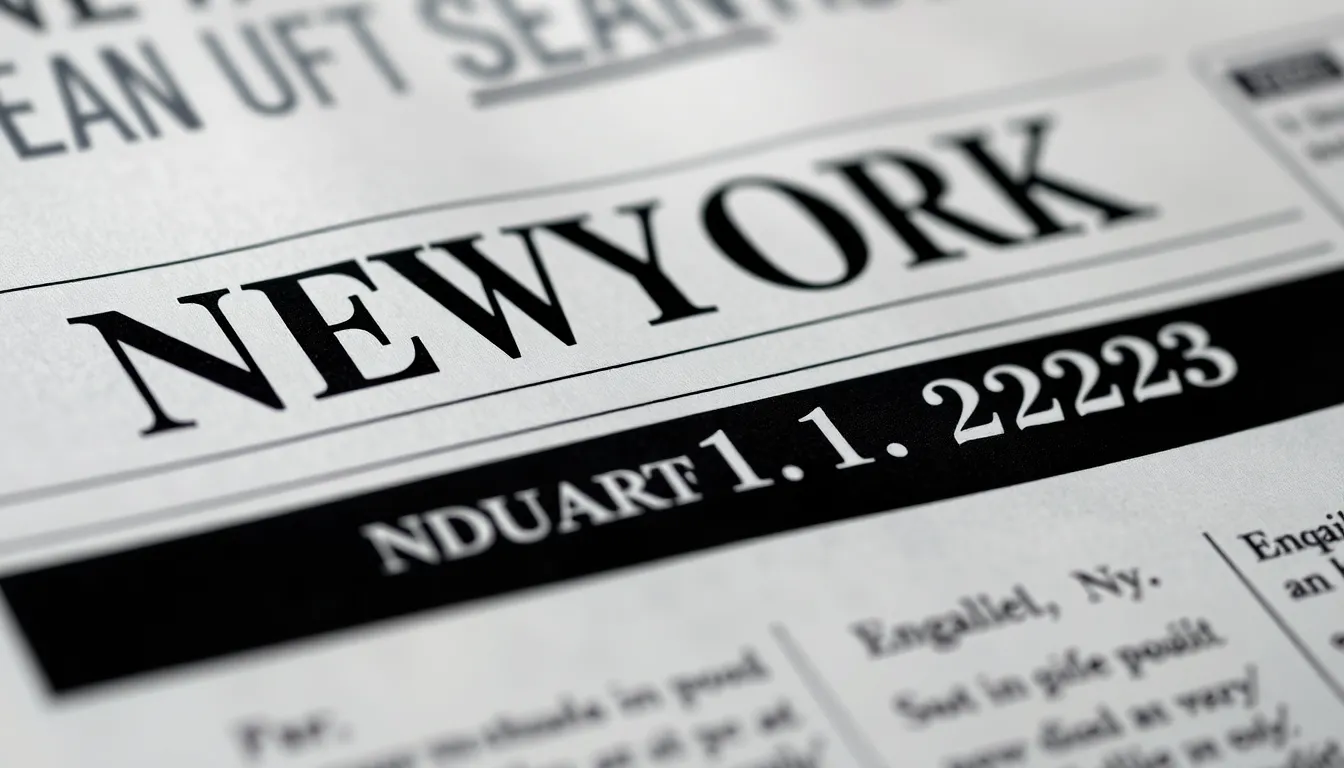Table of Contents
ToggleWhen it comes to journalism, every detail counts—even the dateline. Think of it as the fancy hat your article wears to the party; it needs to look sharp and sophisticated. AP style datelines not only provide essential context but also maintain a professional flair that keeps readers engaged. After all, nobody wants to read a story that feels like it was written in a dark basement with no windows.
Overview of AP Style Datelines
AP style datelines provide essential context for news articles. They generally include the city name, followed by the date, which informs readers about the article’s origin and timeframe. For example, “NEW YORK, Sept. 25” illustrates this format clearly.
The city name should appear in uppercase letters without punctuation. Following the city name, a comma separates it from the date. Month names should appear in full if not accompanied by a specific date. Using abbreviations is acceptable for months in specific contexts, such as when paired with a date.
When mentioning states, AP style prefers the abbreviated form. For clarity, city-state combinations should appear like “COLUMBUS, Ohio” or “LAKE SUCCESS, N.Y.” In instances where the city is widely known, omitting the state is permissible.
AP datelines play a critical role in establishing credibility. They offer readers immediate context about a story’s location and temporal relevance. Accurate information in datelines ensures that articles convey professionalism and trustworthiness, which is crucial for engaging readers.
Correct usage of datelines reflects attention to detail, which enhances the overall quality of writing. Engaging readers through well-structured articles requires diligence in applying AP style. Heeding these guidelines helps writers maintain the clarity and consistency necessary for effective journalism.
Components of AP Style Datelines

AP Style datelines consist of several critical components. Essential elements include location and date format, each serving specific purposes in journalism.
Location
City names appear in uppercase letters, illustrating the article’s origin clearly. For example, “NEW YORK” or “LOS ANGELES” signifies where the story unfolds. When including state names, use standardized abbreviations to enhance clarity and brevity. The full name of the state isn’t necessary unless the context requires it. For instance, “NEW YORK, N.Y.” uses the abbreviation after the city name. This concise format promotes consistency across articles and provides readers with immediate geographical context.
Date Format
The date follows the location and uses a specific structure to maintain clarity. Authors should format dates as month, day, and year. For example, “January 1, 2023” adheres to AP style guidelines. No ordinal indicators are used in AP style, so it should read “January 1” instead of “January 1st.” Maintaining a comma between the day and year is essential for proper formatting. This clarity assists readers in understanding the timeline of events quickly.
Common Practices for AP Style Datelines
AP style datelines follow specific conventions that ensure clarity and consistency in journalism. Formatting begins with the city name in uppercase letters, such as “CHICAGO”. Abbreviations for state names conform to standard AP style, using two letters for states, like “IL” for Illinois.
Dates in datelines require precise structure. The correct format includes the month spelled out, followed by the day and the year, such as “September 21, 2023”. Notice that no ordinal indicators like “st” or “th” accompany the day.
Commas play a vital role in datelines. A comma separates the city from the date and also before the year, maintaining clarity. Failure to include this punctuation can lead to confusion over the dateline’s meaning.
Datelines reflect not just location but also timeliness. Readers gain immediate context about when and where the news occurred. This information builds trust, ensuring articles are credible while providing essential background.
Additionally, capitalization is critical. Every word in the dateline must start with a capital letter. This applicability underscores the professionalism associated with AP style, engaging readers and enhancing the article’s quality.
Lastly, consider that consistent practices in datelines strengthen journalistic standards. Emphasizing these elements ensures articles convey professionalism and maintain reader interest effectively. Adhering to AP style datelines sets a solid foundation for impactful storytelling.
Examples of AP Style Datelines
AP style datelines follow a precise format important for clarity in journalism. City names appear in uppercase letters, ensuring immediate recognition of the location. Following the city name, journalists include the abbreviated state name. For instance, “LOS ANGELES, CA” serves as a perfect example.
Consider the date format; it includes the month spelled out, followed by the day and year. An example of this structure might read “SEATTLE, WA, March 15, 2023.” This format avoids ordinal indicators, like “th” or “st,” ensuring clear communication.
Furthermore, datelines with different locations might look like this:
| City | State | Date |
|---|---|---|
| NEW YORK, NY | NY | September 12, 2022 |
| AUSTIN, TX | TX | January 5, 2023 |
| CHICAGO, IL | IL | June 20, 2021 |
Real-world examples enhance comprehension. An article originating in Chicago may state: “CHICAGO, IL, February 10, 2022.” Each element is crucial for providing context and establishing credibility.
News reports from international locations adopt a similar structure but adapt state abbreviations to country context. For instance, “LONDON, UK, August 1, 2023” indicates the global scope of storytelling.
Applying these examples demonstrates how adherence to AP style datelines enriches writing, ensuring clarity, professionalism, and consistency across journalism. Consistent usage reflects a journalist’s attention to detail and commitment to standards.
Mastering AP style datelines is essential for any journalist aiming to enhance their writing. By following the specific formatting rules and guidelines, writers can establish credibility and professionalism in their articles. Properly formatted datelines not only provide crucial context but also engage readers effectively.
Attention to detail in datelines reflects a commitment to journalistic standards, ensuring clarity and consistency. As journalists embrace these practices, they contribute to a more informed audience and uphold the integrity of their craft. Implementing these guidelines will undoubtedly elevate the quality of their writing and the overall impact of their stories.




